#massimo bonetti
Explore tagged Tumblr posts
Text
Elezioni Europee 8-9 giugno 2024. I dati sui voti riportati dalle liste e dai candidati presenti nella Circoscrizione V : ITALIA INSULARE

Elezioni Europee 8-9 giugno 2024. I dati sui voti riportati dalle liste e dai candidati presenti nella Circoscrizione V : ITALIA INSULARE Sezioni + Comunicazioni f. s.: 7.167 / 7.169 Dato aggiornato al: 10/06/2024 - 10:23 Liste Voti % FRATELLI D'ITALIA 420.444 21,25 FORZA ITALIA - NOI MODERATI - PPE 402.208 20,33 PARTITO DEMOCRATICO 330.909 16,73 MOVIMENTO 5 STELLE 321.376 16,24 LEGA SALVINI PREMIER 138.354 6,99 ALLEANZA VERDI E SINISTRA 121.494 6,14 LIBERTA' 117.856 5,96 PACE TERRA DIGNITA' 44.183 2,23 STATI UNITI D'EUROPA 42.456 2,15 AZIONE - SIAMO EUROPEI 29.100 1,47 ALTERNATIVA POPOLARE 9.928 0,50 TOTALE LISTE 1.978.308 100 FRATELLI D'ITALIA Sezioni: 7.163 / 7.169 Candidato Preferenze MELONI GIORGIA DETTA GIORGIA 242.050 MILAZZO GIUSEPPE 65.221 RAZZA RUGGERO BENEDETTO ITALO 61.500 GIAMMUSSO MASSIMILIANO DETTO MASSI, DETTO MUSSO 43.223 DEIDDA SALVATORE DETTO SASSO 29.405 AMATA ELVIRA 24.833 SAVARINO GIUSEPPA DETTA GIUSI 22.680 SCORPO ALESSIA 14.734 FORZA ITALIA - NOI MODERATI - PPE Sezioni: 7.163 / 7.169 Candidato Preferenze TAMAJO EDMONDO DETTO TAMAIO, DETTO DI MAIO, DETTO EDY, DETTO EDI, DETTO EDDY 121.356 FALCONE MARCO 99.953 CHINNICI CATERINA 93.291 DELL'UTRI MASSIMO 69.231 GRASSO BERNARDETTE FELICE 47.445 COSSA MICHELE 36.267 LA ROCCA RUVOLO MARGHERITA DETTA RITA 28.000 CALIA MADDALENA 22.995 PARTITO DEMOCRATICO Sezioni: 7.163 / 7.169 Candidato Preferenze SCHLEIN ELENA ETHEL DETTA ELLY 84.686 LUPO GIUSEPPE DETTO PEPPINO 49.627 BARTOLO PIETRO 44.384 NICITA ANTONIO 43.407 QUAQUERO ANGELA MARIA 42.338 TILOTTA LIDIA 37.361 TIMBRO MARIA FLAVIA 11.326 BELVISI GIUSEPPE 2.744 MOVIMENTO 5 STELLE Sezioni: 7.163 / 7.169 Candidato Preferenze ANTOCI GIUSEPPE 64.554 PILO CINZIA 39.494 CINQUE PATRIZIO 30.987 FARRUGGIA VIRGINIA 21.321 PORCU MATTEO 18.417 DI PRIMA ANTONELLA 17.386 MONTAUDO MATILDE DETTA MONTAURO, MONTALDO, MONTALTO 13.304 RANDAZZO ANTONINO 11.332 LEGA SALVINI PREMIER Sezioni: 7.163 / 7.169 Candidato Preferenze STANCANELLI RAFFAELE 44.162 VANNACCI ROBERTO 35.145 TURANO GIROLAMO DETTO MIMMO 18.620 TARDINO ANNALISA 17.578 GERMANA' ANTONINO SALVATORE 14.002 REITANO FRANCESCA 10.057 BONAFEDE ESTERINA 7.987 LUNESU MICHELINA 6.853 ALLEANZA VERDI E SINISTRA Sezioni: 7.163 / 7.169 Candidato Preferenze SALIS ILARIA 50.398 LUCANO DOMENICO DETTO MIMMO 25.780 ORLANDO LEOLUCA 18.539 MUSCAU FRANCESCO 9.979 PAGLIAZZO STEFANIA 6.496 BARBARA EMANUELE 3.318 DATO CINZIA 3.271 FIERTLER GIULIANA DETTA FIRTLER, DETTA FITLER 2.723 LIBERTA' Sezioni: 7.163 / 7.169 Candidato Preferenze DE LUCA CATENO 69.752 CASTELLI LAURA 30.666 LA VARDERA ISMAELE 20.208 FERRO GIULIA 10.956 BANDIERA EDGARDO DETTO EDY 10.747 AIELLO PIERA 3.609 FIGUS BARBARA 3.476 PARRINELLO ANTONIO GIUSEPPE 2.796 PACE TERRA DIGNITA' Sezioni: 7.163 / 7.169 Candidato Preferenze SANTORO MICHELE 21.047 FRESU GIOVANNI 5.757 SABENE BENEDETTA 3.065 MONNI ELISA 2.504 BACCOLI FEDERICA 2.097 LA VALLE RANIERO LUIGI 1.423 MANTINEO ANTONINO 1.253 BOMPIANI GINEVRA ROBERTA 1.206 STATI UNITI D'EUROPA Sezioni: 7.163 / 7.169 Candidato Preferenze RENZI MATTEO 15.739 FALLETTA VALENTINA 6.455 MICARI FABRIZIO 4.506 BERNARDINI RITA 3.883 PUTZOLU PIETRINA 2.927 BALLATORE LUCA 2.532 CALANNA FRANCESCO CONCETTO 1.522 POLITI CAROLA 886 AZIONE - SIAMO EUROPEI Sezioni: 7.163 / 7.169 Candidato Preferenze CALENDA CARLO 7.968 ALFANO SONIA 4.903 PALAZZOLO GIANNI DETTO GIANGIACOMO 3.558 TRUDU NICOLA 1.202 BONETTI ELENA 1.199 BENONI MARTINA 1.190 COCOMERO ROSANNA 583 DAMIANI GIANFRANCO 514 ALTERNATIVA POPOLARE Sezioni: 7.162 / 7.169 Candidato Preferenze ROMAGNOLI MASSIMO 4.364 BANDECCHI STEFANO 1.022 ALAIMO ALFONSO 437 GATTUSO MATTIA DETTA TEA 431 VALENTI VALENTINA 346 CIAMBRONE MANUELA 283 Read the full article
0 notes
Text
Saturday’s Late Night Sci-Fi Cinema (Special Double Feature)
Cosmos: War of the Planets (1977 film)

Italian theatrical (left) and one of the many international release (right) posters
Main cast:
John Richardson as Captain Fred Hamilton Yanti Somer as Meela Massimo Bonetti as Vassilov Aldo Canti as Etor Craig Kelly (as Romeo Constantini) as Commander Armstrong
Production staff:
Directed by: Alfonso Brescia (as Al Bradley) Story by and screenplay by: Alfonso Brescia (as Al Bradley), Aldo Crudo (as Al Crydo), Maxim Lo Jacono (uncredited) and Jacob Macci (uncredited) Cinematography by: Silvio Fraschetti (as S. Fraschetti) Special effects by: Aldo Frollini (as Aldi Frollini) Edited by: Larry Marinelli (as Lawrence Marinelli) and Carlo Reali (as Charles Really) Music by: Marcello Giombini (as Marcel Giombrini) Produced by: Luigi Alessi (as Louis Aless) (executive producer) and Doro Vlado Hreljanovic (executive producer) Production company: Nais Film Distributed by: Picturemedia Limited Original release date: September 23, 1977 (Italy) YouTube channel: Filmix
In a distant time, where most of mankind is putting their unconditional trust in technology, Captain Fred Hamilton has a different attitude.
He is now at Orion Space Complex before its commander facing a charge of insubordination for slapping one of his superiors.
The reason: he refuses to take orders from the WIZ Computer System.
The Commander Armstrong decided not to punish him by now because he thinks Hamilton's mindset will be useful at missions in outer space. And orders the Captain and his crew from the Starship MK-31 to repair a 100 year-old satellite.
After the success of the repair mission, Captain Hamilton receives another order: To track the origin of a signal that interferes with all radio and video communications of planet Earth.
The MK-31 arrives to an alien planet to be received by two flying saucers ready to the attack.
The crew took down one of them and received a direct hit from the other. They had to make a landing on the planet.
In there, they found a race of humanoids who are under the slavery of a giant robot.
It seems the Captain and his crew are the last resort for both Earth and that alien world.
Cosmos: War of the Planets is an Italian space opera film from 1977. Its original title is Anno Zero: Guerra Nello Spazio (Year Zero: War In Space in English). Directed by Alfonso Brescia under the pseudonym of Al Bradley.
Fascinating fact:
A Star Wars rip off that gets its release a few months after the release of Episode IV: A New Hope.
youtube
War of the Robots (1978 film)

Italian theatrical release poster (left) and a cover art for one of the many international VHS, DVD and Blu-Ray releases (right)
Main cast:
Antonio Sabato, Sr. as Captain John Boyd Yanti Somer as Julie Malisa Longo (as Melisa Long) as Louis Aldo Canti (as Nick Jordan) as Kuba The Alien Jacques Herlin (as Jacques Herlein) as Professor Carr Ines Pellegrini (as Mickey Pilgrim) Ian Pulley as The Autoritarian Leader Roger Brown (uncredited) as Commander King Licinia Lentini (as Lilian Lacey) as Commander King's Assistant
Production staff:
Directed by: Alfonso Brescia (as Al Bradly) Story by and screenplay by: Alfonso Brescia (as Al Bradly) and Aldo Crudo (as Alan Rawton) Cinematography by: Silvio Fraschetti (as Cyril Franks) Special effects by: Aldo Frollini (as Allan Forsyth) Edited by: Mariano Arditi (as Mark Arnold) Music by: Marcello Giombini (as Marcus Griffin) Produced by: Luigi Alessi Production companies: Nais Film and Koala Cinematografica Distributed by: Picturemedia Limited Original release date: April 21, 1978 (Italy) YouTube channel: Timeless Classic Films
The Professor Carr developed a machine that could give to the ones who own it such a great power to create life but it could also can lead to disastrous results.
At that time, an UFO has infiltrated the planet Earth's security system bringing in a gang of alien robots that kidnapped the Professor and his assitant, Louis.
In the Space Station Sirius, Commander King gave orders to Captain John Boyd and his crew of the Spaceship Trissi to pursue the UFO and rescue the couple of scientists.
There is also an urgent need to rescue the Professor. He is the only one capable of turning off a nuclear reactor. If it is not done, the Station and a nearby city would be destroyed in an explotion.
In the pursuit, they have to face more UFOs. After a intense battle with the saucers, they land on the planet Antor.
There, the crew of the Triss meet a dying world and their inhabitants. They established a friendship with Kuba, the leader of a tribe of slaves who agree to go with them to fight against their tyrannical masters.
Captain Boyd and his crew are about to be witnesses of the true nature of the Professor and his assitant in order to save the future.
War of the Robots, is an Italian space opera film from 1978. Its title is a translation of the original title La Guerra Dei Robot. Directed by Alfonso Brescia under the pseudonym of Al Bradly.
Fascinating facts:
It is not a sequel of Cosmos: War of the Planets. It was produced with much of the production crew, actors and props from the aforementioned movie, but its storyline is different.
The name of Trissi it's also the name of Trissi Sports. The same company in charge of the design and making of the spacesuits.
youtube
#space opera#space western#70s sci fi#star wars rip off#star wars rip offs#star wars episode iv: a new hope#Alfonso Brescia#Al Bradley#Al Bradly#Italian sci-fi#italian fantasy#italian adventure#italian movies#italian film#italian films#Italian movies#Youtube
0 notes
Video
youtube
Kaos (1984) - Trailer
TONINO GUERRA
FRANCO E CICCIO NEL LORO ULTIMO FILM INSIEME
Paolo e Vittorio Taviani Soggetto Luigi Pirandello (raccolta Novelle per un anno) Sceneggiatura Paolo e Vittorio Taviani, Tonino Guerra Produttore Giuliani G. De Negri Fotografia Giuseppe Lanci Montaggio Roberto Perpignani Musiche Nicola Piovani Scenografia Francesco Bronzi Costumi Lina Nerli Taviani Interpreti e personaggi Margarita Lozano: Mariagrazia (1 ep: L'altro figlio) Gianni Musy: padre dell'emigrante (1 ep. L'altro figlio) Anna Malvica: la madre (2 ep: Mal di luna) Massimo Bonetti: Saro (2 ep: Mal di luna - Colloquio con la madre) Claudio Bigagli: Batà (2 ep: Mal di luna) Enrica Maria Modugno: Sidora (2 ep: Mal di luna) Ciccio Ingrassia: Don Lollò (3 ep: La giara) Franco Franchi: Zi' Dima (3 ep: La giara) Tony Sperandeo: uno dei contadini (3 ep: La giara) Salvatore Mignosi: uno dei contadini (3 ep: La giara) Omero Antonutti: Pirandello (ep: Epilogo: colloquio con la madre) Regina Bianchi: la madre di Pirandello (ep: Epilogo: colloquio con la madre) Biagio Barone: Salvatore
0 notes
Text
Pro Sesto-Juventus Next Gen: la formazione ufficiale scelta da Brambilla
Mister Massimo Brambilla ha scelto l’undici titolare che affronterà la Pro Sesto in trasferta in questa 27a giornata del girone di ritorno di Serie C. JUVENTUS NEXT GEN: Crespi, Riccio, Huijsen, Stramaccioni; Mulazzi, Sersanti, Palumbo, Besaggio, Turicchia; Sekulov, Pecorino. A disposizione: Raina, Savona, Nzouango, Da Graca, Compagnon, Cudrig, Poli, Bonetti, Cotter, Iocolano, Lipari, Cerri.…
View On WordPress
0 notes
Text

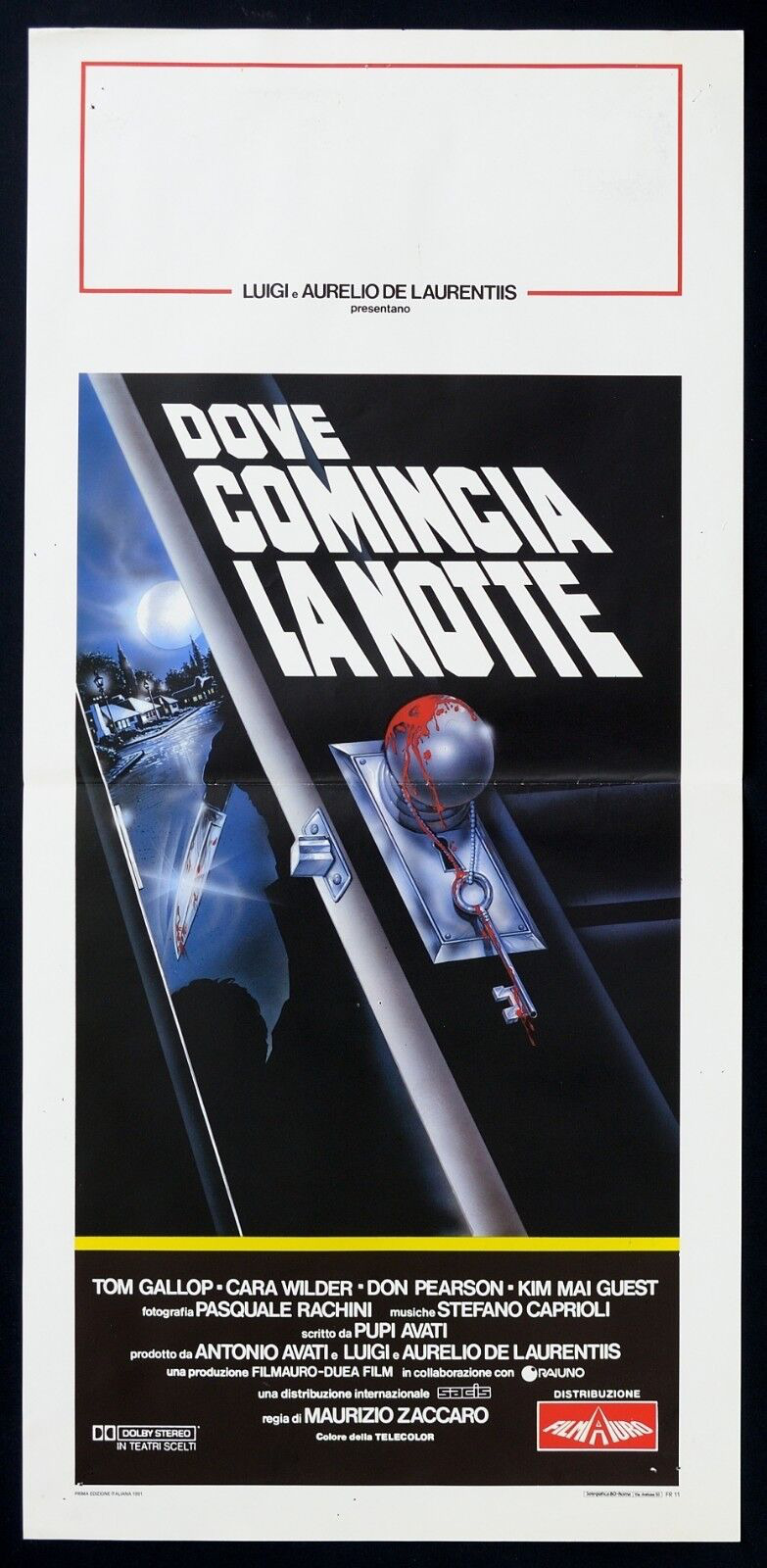




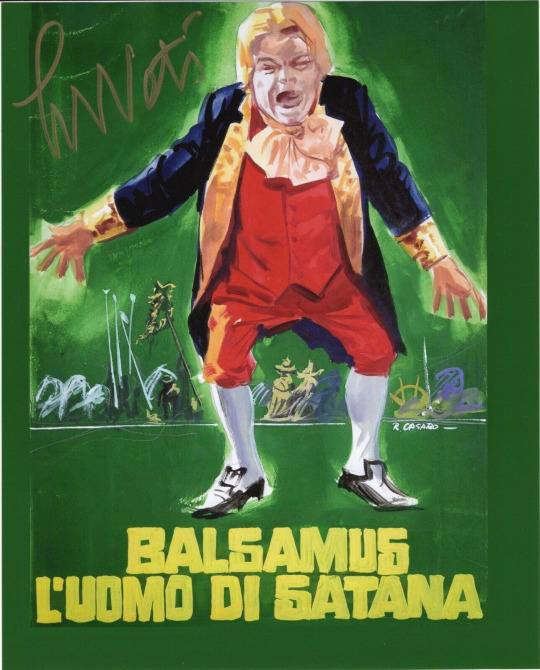
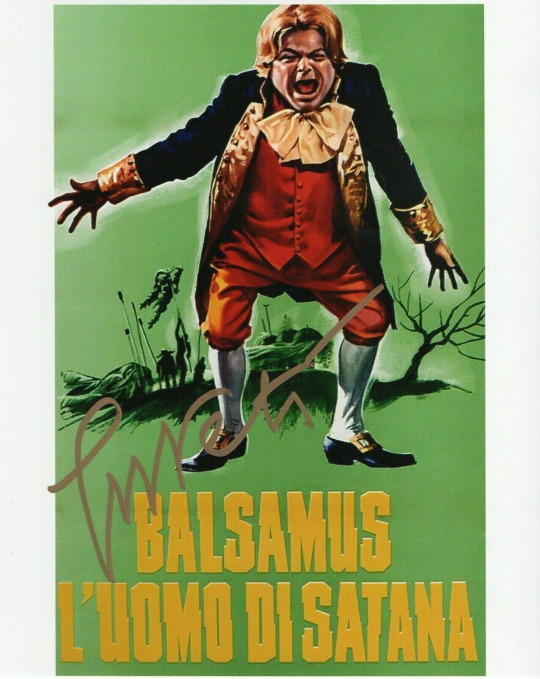
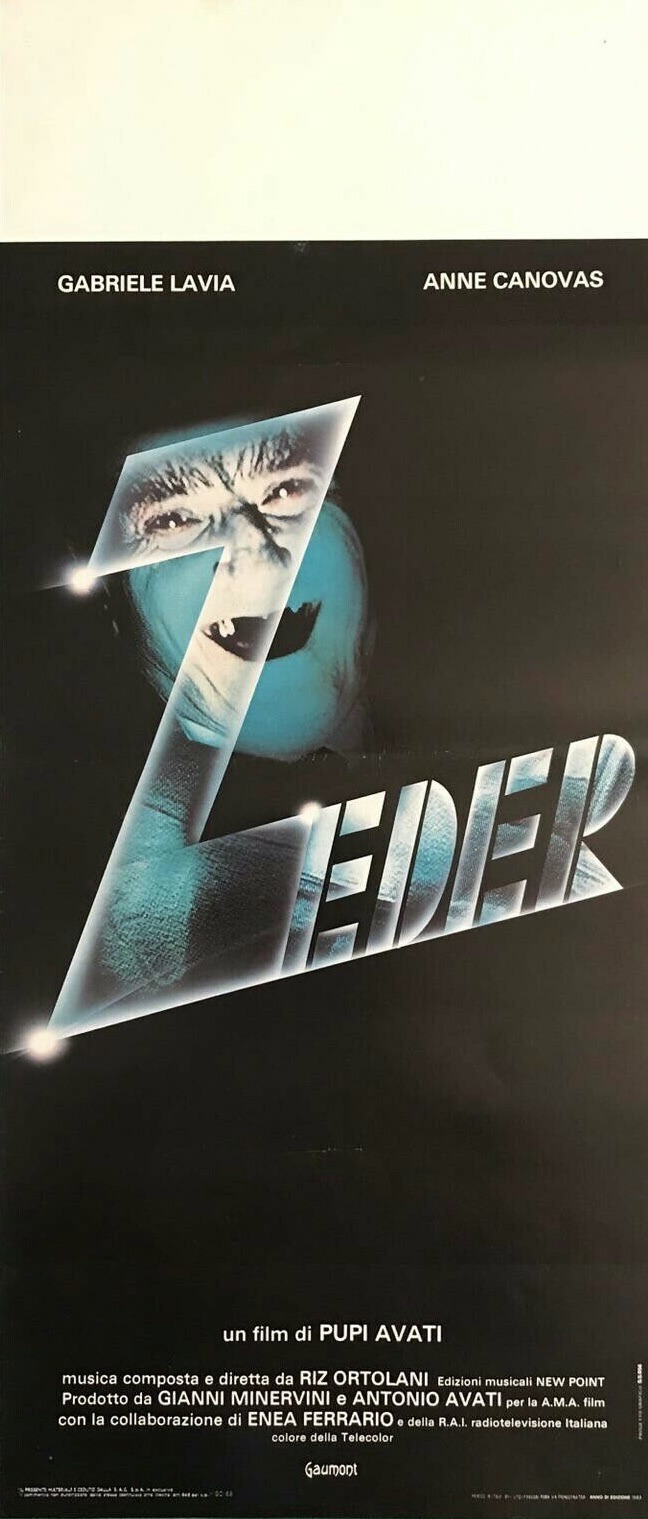

PUPI AVATI
#il signor diavolo#balsamus l’uomo di satana#l’arcano incantatore#zeder#dove comincia la notte#stefano dionisi#gabriele lavia#lino capolicchio#andrea roncato#cesare cremonini#massimo bonetti#chiara caselli#gianni cavina#alessandro haber
7 notes
·
View notes
Photo

Il Signor Diavolo
9 notes
·
View notes
Text
Obscure Christmas Movie Rewatch: Yes Virginia, There is a Santa Claus
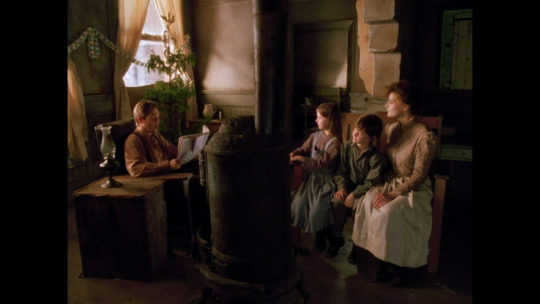
This was my absolute favourite Christmas movie when I was a kid (behind Muppet's Christmas Carol), and it is so veiled in nostalgia I'm not sure I can be objective (or snark too much), but here we go.
Purporting to tell the story behind the 1897 Editorial Is There a Santa Claus? by Francis Pharcellus Chruch, the events and characters have been heavily fictionalised (as the text and v/o at the end helpfully reminds us). I'm therefore going to do some fact checking as to historical accuracy, but only out of interest, and certainly not intended as a criticism. I genuinely love this movie!
youtube
We open with Francis P Church (the late great Charles Bronson) in a cemetery, brushing the snow off the grave of his wife Elizabeth and baby Eleanor who died a year earlier. He opens up a gold watch with her picture inside, and it plays a gentle tune. He then takes out a bottle of whiskey, but turns away from the grave before he takes a swig.
In real life Church was indeed married to Elizabeth Wickham, but they had no children and I can't find any information about when she died (Francis passed in 1906). However in terms of framing a character, this is pretty effective.

We see The Sun newspaper being delivered, giving us the date of 17 December 1897.
Then we're at the docks, where James O'Hanlan (Richard Thomas) and Dominic Donelli (Massimo Bonetti) are fired after getting into a fight with another worker who levies several ethnic slurs and anti-immigrant rhetoric at them. Thomas was apparently one of the Walton kids (which I've never seen), and is one of those working actors who has seemingly been in every procedural known to man - he was also in The Americans and Ozark (but I haven't seen those either).

Their eight year old daughters Virginia (Katherine Isabelle) and Maria (Virginia Bagnata) meanwhile, are being mocked by her classmates for believing in Santa Claus. Look, the child performances in this movie are...what you would expect. But I'm not here to criticise kids, they do their best.
James can't find another job, reduced to reading The Sun a day late once it's put out in the trash, and the family is struggling. His wife Evie (Tasmin Kelsey, who I remember as Gairwyn from Stargate SG-1) is an optimist and tells him to keep up his spirits. James: "The trouble is there's too much damn spirit and not enough damn jobs."
In actuality, Philip O'Hanlan was a surgeon and coroner and they were a middle class family who lived on the Upper West Side. Virginia went on to achieve a doctorate in childhood education and was a teacher for over 40 years - her childhood home is now a school.
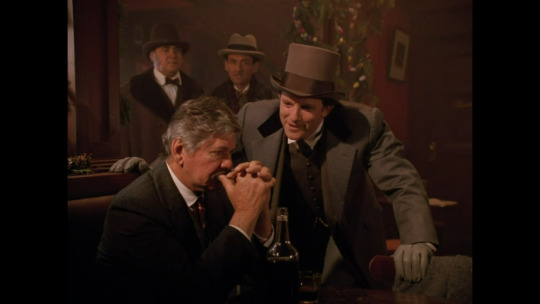
Frank stumbles into the offices of The Sun to pick up another bottle of whiskey from his desk, and then to the local bar to brood. Local pompous aristocratic jerk Cornelius Barrington (John Novak - who has apparently been in every Canadian-filmed production ever, including Smallville and Stargate) arrives to goad Frank about his affinity for those filthy poors. In doing so, he makes Frank sound legitimately badass: "The great egalitarian editorializer, friend and champion of the common man, would-be slayer of the capitalist dragons!"

The newsroom is populated by editor Edward Page Mitchell (the late great Ed Asner), copyboy Teddy (Shawn Macdonald), and sole female reporter Andrea Borland (Colleen Winton - apparently she was also in two episodes of Stargate but I can't place her). She's ambitious and frustrated that Mitchell will only let her report on society matters. Not gonna lie, there's a whiff of Perry White, Lois Lane, and Jimmy Olsen about them (or maybe it's just that I rewatched the 1978 Superman recently). There's a bit of snappy dialogue:
Andrea: Did you like my society piece on the Vanderbilt ball?
Mitchell: I printed it, didn't I?
Andrea: Well...half of it
Mitchell: That was the half I liked.

Andrea heads to the bar and hesitates only for a moment at the "men only" sign before going in to find Frank and try and retrieve the article Mitchell was looking for - "The Shame of Greatness".
Frank hands her a page of a few ideas and a lot of gibberish, while Corenlius watches literally eating popcorn. There's just a big bowl of popcorn sitting out in this men's bar and grill!
If gifs were a thing in the 90's this would have been a meme.
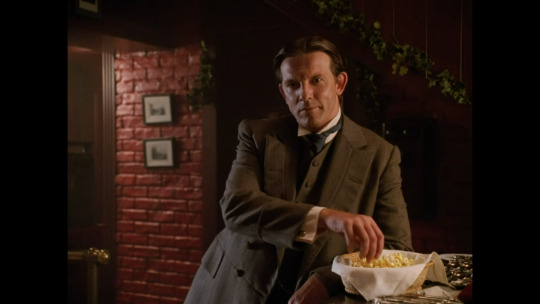
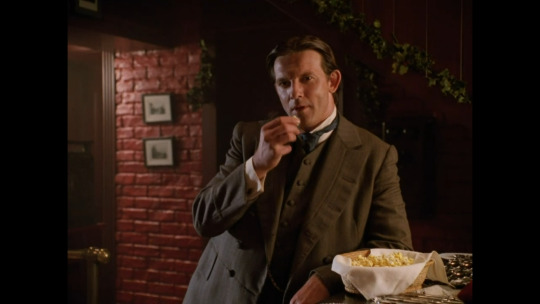
Andrea rewrites the article and gives it to Mitchell in Frank's name. It's a great success, with Teddy walking around reciting lines and calling it "a real humdinger!" Frank confronts Andrea, and she confides in him that it was his lecture at her university that inspired her to keep going when she was only one of three women in the class (and the other two ended up getting married).
We get the dramatic irony in Frank's refusal to be impressed: "Tomorrow it will be yesterday's newspaper, and you can wrap a fish in it. Nothing that you, or I, or anybody else writes for a newspaper has a lifespan of more than 24 hours."
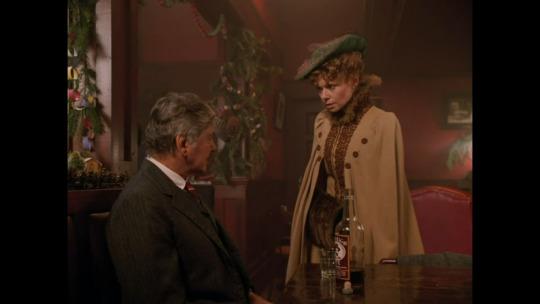
Cornelius approaches Andrea and offers her a job to work at his uncle's paper The Chronicle in order to expose Frank as a fraud (in real life Church actually once worked at The Chronicle, which was published by his father). But as a woman of principle she coldly rejects him, and honestly, I love her. Frank has been nothing but dismissive and patronising towards her, so it's clear it's not solely about protecting him (and perhaps the ideal she had of him) but more about who she is and what she believes. Underrated character in an underrated movie.
James foils a robbery, and the police arrive with accents of the diddly dee potatoes variety. When he arrives home he's greeted by his Jewish neighbor Mrs Goldstein. It's interesting that this is a very similar setting to Mrs Santa Claus - New York at the turn of the century and has some thematic similarities - the immigrant experience and the importance of community in particular.
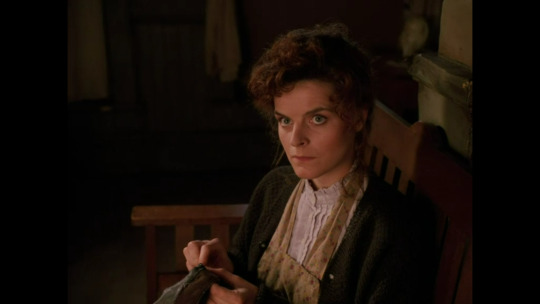
James reads aloud The Shame of Greatness article to the family:
"We have become a great nation, but at what cost? Ask the red man, the black man, the immigrant, the elderly, the ill. We have built a railroad across the 45 states and bridges across rivers but there is no bridge of brotherhood. Why? Because there is no profit in that bridge. Ask the captains of industry, ask the robber barons, ask the politicians about that bridge."
Unfortunate racial wording aside, it's a sentiment that wouldn't be out of place now, 31 years after this film was made, and 125 years after the film is set. I like a little activism in my Christmas movies.
It's also worth noting that most of the above passage were parts written by Frank, so Andrea's suggestion that they were his ideas is given credence - we don't know what the rest of the article went on to say but it's implied Andrea is a great writer able to match Frank's voice.

James speaks to the frustration of America not being the promised land: "It's hard to believe that fifty years ago our people came to this country because they were starving in Ireland. Potato famine indeed! High rents ha! It's no different over here."
As a child watching this movie was the first time I'd heard of the potato famine, and it's only this rewatch I noticed that Virginia is reading a book about Oliver Cromwell! Yikes. I don't know if that was deliberate, but certainly an interesting touch.
Evie however, takes the other side of the argument, telling James to stop feeling sorry for himself, and to be grateful for what they have - family, a place to live, and food (and God - this is certainly the most religious movie of this rewatch). Evie: "You can be poor if you want to James O'Hanlon, but I'm rich. And I grow richer every day of my life."
Virginia asks her father if Santa Claus is real, and he is the envy of every parent in quickly thinking to deflect and encourage her to write to The Sun for an answer instead.

Frank is back at the bar, where Cornelius goads him about Andrea, implying there are other things she is taking care of for him. Finally Frank is moved to respond, and when Cornelius warns him that he was "Captain of the Yale boxing team" Frank punches him square in the face, knocking him to the floor.
"I've done some fighting myself, Captain," Frank says, "around Hell's Kitchen." When I was a kid I didn't realise this referred to a gritty part of New York and thought it was a metaphor and an allusion to his roving reporter life - I think it works either way.
At the postbox, Virginia is gifted a stamp by the kindly German postman Hans Schuller, in another example of this community of immigrants helping each other through the hard times.

At The Sun, Frank looks at his wife's picture in the watch, and Teddy remarks that one day he'll have a watch like that ("a real himdinger!" - an annoying catchphrase, but it's meant to be annoying). Frank takes the picture out and puts the watch in an envelope with Teddy's name on it, then goes home where he turns off the fire but leaves the gas on, in the grand tradition of family Christmas movies including attempted suicide!
I admit this went right over my head when I first watched this as a kid, I think subtle enough not to be too dark for younger viewers. There's also a nice bit of production design comparing Frank's warm and furnished apartment with the O'Hanlan's grey and bare abode.

Mitchell arrives to give Frank the assignment of answering Virginia's letter, and we get to the core of Frank's depression - that he was a man who lived for his work, never even spending one Christmas dinner with his wife because he was away on assignment, and the irony that he was in Panama writing about yellow fever while she was dying of pneumonia - guilt and longing and regret. It's pretty complex stuff for a family film, and something I never really appreciated until I was older.
Now, it's certainly wholesale fiction - Francis Church married Elizabeth in 1871, so not merely married for "more than three years" as in the film. In fact, her birthdate on the grave is 1860, which puts a bit of a different spin on things with Frank significantly older rather than being her contemporary as in real life. This is alluded to in their conversation as Frank says he took many more years than most men to find a wife, adding to his guilt for not being there for her and appreciating what he had.
There's also nothing I could find that indicated he was an alcoholic - allegedly he was an atheist and hated writing the famous editorial.
But Ed Asner and Charles Bronson are both great actors, and play so well off each other. I do give credit for this scene not being too overwritten - if you actually pay attention to the grave at the beginning you see that Elizabeth and Eleanor died on 24 December the previous year - which is on the nose, but it remains subtext rather than Frank giving exposition of the "They died on Christmas and that's why I hate it!" variety.

The next day at the paper we get a cameo from screenwriter Andrew J Fenady as the reporter who tells Mitchell things are "heating up" in Cuba, referring to the Cuban War of Independence and a precursor to the Spanish-America War. I do enjoy these small historical touches.
Meanwhile, James and Dominic find jobs for the day but have another run in with the dock workers and get to thoroughly beat them up in a nice bit of karma. There's really no point to this scene other than to see the bigots get punched, but hey, I'm here for that, and it also keeps James' story parallel to Frank's.
Frank wanders around the city and is inspired by what he sees - the poor being fed by a soup kitchen, a policeman helping an elderly homeless man, people donating to toy drives, and a scene in a park complete with brass band, sleigh rides, ice skating, and general seasonal joy. He finds a baby's rattle that inspires part of the editorial, and sees a young couple with their child, sending him back to visit his wife's grave. He buys flowers but decides to throw them away rather than placing them on the grave - along with his bottle of whiskey.
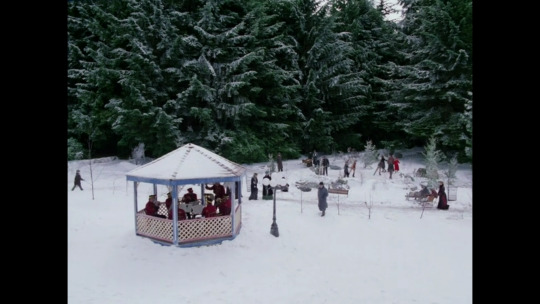
I actually think this is a great example of show-not-tell writing - a lesser piece would have had Frank talk to his wife at her grave, saying how sorry he was he never appreciated her enough when she was alive, asking how he was going to answer Virginia's question when he himself doesn't believe in anything anymore, and then make a breakthrough. But not a word is uttered - we have Bronson's performance, we see him start to experience life again and decide to stop wallowing in his grief and return to his passion for writing. It's actually very deftly done.
Mrs Goldstein appears again to give the O'Hanlan's some brisket because she "made too much." It's very sweet but James gets in his feelings about it because he's not the one providing for his family.

The police arrive to take James down to the station for questioning about the robbery, and while he's gone Virginia uses a penny she found on the street earlier to buy a paper - wanting to give her father the gift of The Sun on the day it's printed rather than the next.
Back at the paper, Frank puts his wife's picture back in his gold watch, and instead gives Teddy another: "it's not gold, and it doesn't play a tune, but it was my first watch and it helped me start the day for many years." He also tells Mitchell he will come to Christmas dinner after all, and Andrea asks him to follow her somewhere, repeating his earlier words back to him: "there has to be a finish to every story."

James arrives back at home with a tree and laden with gifts, including a pet kitten (that he befriended earlier on). Turns out he was given a reward for his part in the robbery, and that both he and Dominic were offered jobs on the police force. Something could be said about James and Dominic becoming cops on the basis of punching people really well, but perhaps this isn’t the place for it.

Virginia gives her father the paper, and of course sees the editorial and reads it aloud, as all our friends arrive, including Andrea and Frank. It's actually a rather moving scene, the community that has supported each other, and who all played a part in the letter being written, delivered, and finally answered.

I honestly think this movie holds up despite the nostalgia goggles - there is some cringe, but through fictionalising the story behind the editorial, it becomes it's own metaphor - the weaving together of these disparate lives and their various struggles, united by hope and faith. Bronson gives a great performance that really grounds the film (and the part must have been particularly resonant for him, as his wife Jill Ireland had died the year before the film was made). I really recommend this movie, and think it's a shame that it isn't as enduring or well known as the original editorial.

"Virginia, your little friends are wrong. They have been affected by the skepticism of a skeptical age. They do not believe except they see. They think that nothing can be which is not comprehensible by their little minds. All minds, Virginia, whether they be men’s or children’s, are little. In this great universe of ours man is a mere insect, an ant, in his intellect, as compared with the boundless world about him, as measured by the intelligence capable of grasping the whole of truth and knowledge.
Yes, Virginia, there is a Santa Claus. He exists as certainly as love and generosity and devotion exist, and you know that they abound and give to your life its highest beauty and joy. Alas! How dreary would be the world if there were no Santa Claus. It would be as dreary as if there were no Virginias. There would be no childlike faith then, no poetry, no romance to make tolerable this existence. We should have no enjoyment, except in sense and sight. The eternal light with which childhood fills the world would be extinguished.
Not believe In Santa Claus! You might as well not believe in fairies! You might get your papa to hire men to watch in all the chimneys on Christmas Eve to catch Santa Claus, but even if they did not see Santa Claus coming down, what would that prove? Nobody sees Santa Claus, but that is no sign that there is no Santa Claus. The most real things in the world are those that neither children nor men can see. Did you ever see fairies dancing on the lawn? Of course not, but that’s no proof that they are not there. Nobody can conceive or imagine all the wonders there are unseen and unseeable in the world.
You may tear apart the baby’s rattle and see what makes the noise inside, but there is a veil covering the unseen world which not the strongest man, nor even the united strength of all the strongest men that ever lived, could tear apart. Only faith, fancy, poetry, love, romance, can push aside that curtain and view and picture the supernal beauty and glory beyond. Is it all real? Ah, Virginia, in all this world there is nothing else real and abiding.
No Santa Claus! Thank God he lives, and he lives forever. A thousand years from now, Virginia, nay, ten times ten thousand years from now, he will continue to make glad the heart of childhood."
#obscure christmas movie rewatch#christmas movies#yes virginia#there is a santa claus#jlf rewatch#jlf posts
6 notes
·
View notes
Photo

Governo Draghi: ne valeva davvero la pena? Di Luca Telese Non è il dream team che tutti sognavano. La prima notizia è questa, qualsiasi cosa se ne pensi, qualunque idea politica si abbia. E non è nemmeno il “governo dei migliori”. Questo è il punto, ed anche il fatto strano di questa vicenda. La prima cosa che stupisce è tutta qui: nato con la possibilità di scegliere chiunque, e con l’aspirazione ad una discontinuità assoluta con il passato, il primo governo di Mario Draghi è molto poco sorprendente. Si fonda (nella parte tecnica) su degli onestissimi gregari, e nella parte politica, come vedremo nel dettaglio, sul trapianto chirurgico di corposi frammenti di tre importanti governi del passato: quello di Conte (ovviamente), quello gialloverde, e – addirittura – dell’ultimo governo Berlusconi. Guardi questa foto di gruppo e non puoi fare a meno di dirti: “Tutto qui?”. Questo il commento, partendo dall’idea che tutti ci auguriamo il meglio, ovviamente, che sognavamo davvero la squadra dei sogni, ma non potendo fare a meno di chiedersi come mai il risultato finale sia sia determinato in questi termini. Per giunta, come se fosse uno scherzo, invece di gioire, i primi a lamentarsi sono stati gli uomini di Forza Italia e la Lega. Matteo Salvini – lo ha fatto in prima persona – quando ha commentato, quasi in diretta, da Enrico Mentana. E Silvio Berlusconi, che lo ha detto in maniera informale, facendo filtrare il malessere con dei retroscena autorizzati di agenzia. Una faccia tosta straordinaria, va detto: il centrodestra si ritrova con sette ministeri in un governo in cui la maggioranza parlamentare (soprattutto alla Camera, non va mai dimenticato) è garantita dalla pattuglia giallorossa. Il prezzo del biglietto di questo governo, dunque – sul piano politico – è pagato interamente da Pd e M5s. Tuttavia ci sono diverse considerazioni da fare. Nella squadra della Lega c’è un buon ministro, Massimo Garavaglia, persona seria e non ideologica. Nella squadra del Pd, al lavoro c’è Andrea Orlando, uomo altrettanto esperito, e anche connotato, il che garantisce che non ci saranno strappi sul piano della tenuta sociale. Nella squadra azzurra c’è Mara Carfagna, che è sicuramente è più progressista e liberale della ministra renziana, Elena Bonetti (una che non risulta pervenuta nemmeno nella prima esperienza di governo, e misteriosamente riconfermata). La prima buona notizia – per chi scrive – è che Italia Viva, il partito-killer che ha la responsabilità della crisi e dell’incertezza in cui ci siamo ritrovati, sulla carta perde un ministero (anche se poi recupera con un “tecnico” di area). Qui il dubbio che mi viene in mente, e che i giornali adoranti (ma spiazzati), di certo non esprimono, è: ma se io fossi stato Draghi e avessi dovuto nominare un renziano, non avrei fatto di tutto per prendermene almeno uno buono? Non sarebbe stato bello un Massimo Recalcati alla Cultura? O un Alessandro Baricco alla pubblica istruzione? E dovendo scegliere “un tecnico”, invece del classico polveroso professorone (Patrizio Bianchi), perché non osare e cercare persone del livello di Renzo Piano? Se mi serviva un leghista non potevo pensare di arruolare la competente Giulia Bongiorno? Si sarebbe potuto continuare all’infinito, e nel Pd, magari, reclutare persone esperte e stimate come Roberta Pinotti, e non il soporifero capocorrente, nonché apostata renziano, Lorenzo Guerini. Il primo punto di dubbio, dunque, è che di migliori c’è n’erano, ma non sono stati messi in squadra. Mentre anche fuori dal pallottoliere è più delicato indagare le conseguenze del prezzo politico enorme sostenuto da chi – come abbiamo visto – garantisce i voti decisivi, e cioè M5s e Pd: perdono entrambi metà della loro delegazione, perdono – questo stupisce – i loro ministri più giovani. Perdono le donne (perché come è noto il governo Conte era molto “rosa”). La selezione darwiniana c’è stata, dunque, ma al contrario: dovendo tagliare, è stato consentito ai partiti di fotografare i loro rapporti di forza, di proiettare le correnti sul governo. E il premier che poteva scegliere -a norma di Costituzione – con insindacabile autonomia, ha seguito questa logica. (...) Il risultato di questa squadra, paradossalmente, ci chiarisce per l’ennesima volta, che metà della campagne di stampa di discredito contro il governo Conte erano infondate, ideologiche o pretestuose: non ci sono uomini della provvidenza in giro, non ci sono Ronaldo e Messi a spasso, nel nostro paese, altrimenti li avremmo trovati al governo. C’è l’Italia, e la sua classe dirigente piena di limiti (anche fra i “tecnici”) con le sue professionalità, ma anche con gli evidenti angoli di mediocrità, i suoi politici “sugheroni”, che stano a galla per disciplina di partito più che per il cursus honorum. Speriamo che nella vita del governo Draghi le politiche riescano a nobilitare la qualità della materia umana, visto che (come abbiamo visto) non è accaduto il contrario.
5 notes
·
View notes
Text
"Il Signor Diavolo" di Pupi Avati. Al cinema dal 22 agosto
“Il Signor Diavolo” di Pupi Avati. Al cinema dal 22 agosto
Autunno 1952. Nel nord est è in corso l’istruttoria di un processo sull’omicidio di un adolescente, considerato dalla fantasia popolare indemoniato. Furio Momentè, ispettore del Ministero, parte per Venezia leggendo i verbali degli interrogatori. Carlo, l’omicida, è un quattordicenne che ha per amico Paolino. La loro vita è serena fino all’arrivo di Emilio, un essere deforme figlio unico di…
View On WordPress
#Alessandro Haber#Andrea Roncato#Cesare S. Cremonini#Chiara Caselli#Filippo Franchini#Gabriele Lo Giudice#Gianni Cavina#Lino Capolicchio#Massimo Bonetti#Pupi Avati
0 notes
Text
Tomita Kazuhiko
Tomita Kazuhiko. Diseñador industrial y de producto.
Tomita Kazuhiko (1965, Nagasaki, Japón) se describe a sí mismo como un nómada errante entre el Este y el Oeste, y su trayectoria profesional y biográfica no hace más que confirmar esta teoría.
Como diseñador es capaz de construir nuevas marcas o de darles un nuevo giro, al aplicar su experiencia creativa en varios campos, desde el diseño gráfico hasta la arquitectura.
Tomita Kazuhiko estudió diseño industrial en la Universidad de Chiba en Japón (1989).
Posteriormente, en la década de 1990, gracias a una beca de Cassina & British Council, estudió diseño de muebles en el Royal College of Arts de Londres, donde se graduó en 1992.
Éste mismo año (1992) se mudó a la ciudad que es la meca del diseño industrial: Milán.
En 1993 diseñó la línea “Stars” de productos cerámicos en colaboración con Alessandro Mendini y Ettore Sottsass.
También en 1993 fundó el Studio 2.5-Dimensional Design (Milán) -que después se convertiría en Tomitadesign– empezando a presentar sus colecciones en ferias internacionales.
En el año 2000, se convirtió en director de Arte de la compañía COVO, y en este contexto, diseñó también la COVO Shop en la ciudad de Roma.
COVO, una marca con un ADN completamente italiano y raíces internacionales, combina elegancia con simplicidad, tradición y contemporaneidad, y clasicismo con diseño vanguardista.
En 2001 creó la colección de artículos de mesa “Rim” para Rörstrand, empresa de porcelana en Kungsholmen (Estocolmo, Suecia), junto con Vico Magistretti.<
Tomita Kazuhiko fue nombrado director de Arte de NUSSHA París en 2004, y desde entonces ha trabajado con varios fabricantes más, incluida por ejemplo, la empresa italiana Moroso.
Las creaciones de Tomita Kazuhiko son lúdicas, pero a la vez prácticas.
Con una mirada cuidadosa y sensible que combina armoniosamente forma y contenido promueve, sin sacrificar nada a la funcionalidad, la investigación y la experimentación que va desde el uso hábil de los materiales hasta la selección previsora de productores internacionales.
Su universo se encuadra dentro del arte y del estilo de vida tradicional japonés a la vez que convive con el concepto europeo de lo moderno. Sus ideas asumen el mismo objetivo, hacer artículos destinados a un uso global y prolongado que dure toda la vida.
Un factor de enlace entre todas sus creaciones es la simplicidad, pues para él éste es un factor muy importante, pero no la simplicidad llevada al minimalismo entendido como lo hacía la Bauhaus.
Para Tomita Kazuhiko la reducción a lo que es importante y esencial es una característica del shintoismo japonés, donde según su teoría los objetos inanimados también contienen energía espiritual.
Así por ejemplo, la colección de mesas de sobremesa”UkiYo” (2006-2007) para Moroso, realizadas en resina de poliéster co-moldeada, están decoradas con los patrones utilizados en los kimonos tradicionales e inspirados en Ukiyo, un movimiento cultural japonés del siglo XVIII.
Relacionado con el realismo sintoísta, que establece que nada puede permanecer sin cambios durante mucho tiempo, la filosofía de este movimiento (Ukiyo) vive cada momento al máximo como una forma, curiosamente, de alcanzar la vida eterna.
Desde esta perspectiva, la floración se convierte en el período anual más alegre y radiante, donde se extiende por todas partes la máxima cantidad de energía. Sin embargo, nadie puede decir si la flor recién florecida seguirá viva un momento después.
Las tapas o sobres de estas mesitas -con finísimas patas de acero tubular acabado en polvo RAL 3003 rojo brillante- se pueden invertir y utilizar como bandejas.
Su trabajo se ha exhibido a nivel mundial, en ciudades como Tokio (exposición individual “2.5-Dimensional Design“, Ozone Gallery, 1999); en Jerusalén (“FUSION: Arquitectura + Diseño en Japón“, 2002, Museo de Israel); Nueva York (Exposición “COVO”, 2002, galería Totem SOHO) o en Milán (“RE-FUSION”, 2003).
También sus productos han entrado en los museos para quedarse, como los productos que diseñó para la marca Essential, que se han integrado en la colección permanente del Museo de Arte Moderno de Nueva York.
Tomita Kazuhiko es profesor visitante en Diseño Industrial en la Universidad de Roma.
Y ha ganado numerosos premios internacionales a lo largo de su carrera, como por ejemplo el primer premio en el concurso “El futuro arquitectónico del acero inoxidable” (Londres, 1991) por Sir Noman Foster.
El Marchette Award Gold, RCA, (Londres, 1993); Distinción G-mark / Good Design Award (1998), Departamento de pequeñas y medianas empresas, JIDPO (Tokio), y The International Design Yearbook (1998 y 2002), Londres.
Tomita Kazuhiko (pág. web).
Tomita Kazuhiko y mesa de sobremesa”UkiYo” (2006-2007) para Moroso.
TodosABCDEFGHIJKLMNOPQRSTUVWXYZ
A
Achille Castiglioni
Adolf Loos
Alessandro Mendini
Alfredo Häberli
Alvar Aalto
Andrea Branzi
Andrée Putman
Andreu Carulla
Andy Martin
Antonio Citterio
Arend Groosman
Arik Levy
Arne Jacobsen
Atelier Oï
Atelier Van Lieshout
Autoban
B
BarberOsgerby
Benjamin Graindorge
Benjamin Hubert
Bertjan Pot
Boca do Lobo
C
Carlo Alessi
Carlo Mollino
Carlos Tíscar
Charles Rennie Mackintosh
Charles y Ray Eames
Claesson Koivisto Rune
Claudio Colucci
Curro Claret
D
David Adjaye
Dieter Rams
DimoreStudio
Doriana y Massimiliano Fuksas
Doshi Levien
E
Ed Annink
Edward van Vliet
Eero Aarnio
Eero Saarinen
Eileen Gray
Elena Manferdini
Elisabeth Garouste
Enrico Franzolini
Enzo Mari
Ettore Sottsass
F
Fabio Novembre
Färg & Blanche
Federica Capitani
Fernando Mastrangelo
Filippo Mambretti
Finn Juhl
Formafantasma
Francesco Rota
François Bauchet
Frank Gehry
Frank Lloyd Wright
Fredrikson Stallard
G
Gabriella Crespi
Gae Aulenti
Gaetano Pesce
Geoffrey Harcourt
George Nelson
George Sowden
Gerrit Rietveld
Gio Ponti
Goula Figuera
Greg Lynn
H
Hans J. Wegner
Héctor Serrano
Hella Jongerius
Hermanos Campana
Hervé Van der Straeten
I
Ico Parisi
India Mahdavi
Inga Sempé
J
Jaime Hayón
Jasper Morrison
Jean Prouvé
Jean Royère
Jean-Louis Deniot
Jean-Marie Massaud
Jean-Michel Frank
Jeffrey Bernett
Jens Risom
Joaquim Tenreiro
Joe Colombo
Johan Lindstén
Jonathan Adler
Joost Van Bleiswijk
Jörg Schellmann
Joris Laarman
Josef Hoffmann
Jurgen Bey
K
Kaare Klint
Kaj Franck
Karim Rashid
Kelly Wearstler
Kenya Hara
Kiki Van Eijk
Konstantin Grcic
L
Le Corbusier
Lex Pott
Lievore Altherr
Lindsey Adelman
Lucas Muñoz Muñoz
Ludovica y Roberto Palomba
Lukas Peet
M
Maarten Baas
Maarten Van Severen
Marc Newson
Marc Thorpe
Marcel Breuer
Marcel Wanders
Marco Acerbis
Marianne Brandt
Marie Christophe
Mario Bellini
Mario Ruíz
Martin Szekely
Martino Gamper
Massimo Iosa Ghini
Matali Crasset
Matteo Thun
Mattia Bonetti
Max Lamb
Michael Anastassiades.
Michele de Lucchi
Mies van Der Rohe
Miguel Milá
N
Nacho Carbonell
Nadadora
Naoto Fukasawa
Neil Poulton
Nendo
Nigel Coates
Nika Zupanc
Noé Duchaufour-Lawrance
O
Odosdesign
Oeuffice
Olivier Mourgue
Ora Ïto
OS and OOS
P
Paola Navone
Paolo Lomazzi
Patricia Urquiola
Patrick Jouin
Patrick Naggar
Patrick Norguet
Pedro Friedeberg
Peter Ghyczy
Peter Marino
Philip Michael Wolfson
Philippe Starck
Piero Fornasetti
Piero Lissoni
Pierre Charpin
Pierre Paulin
Piet Hein Eek
Poul Kjaerholm
Q
Quentin de Coster
R
Ricardo Fasanello
Richard Hutten
Richard Sapper
Rick Owens
Rodolfo Bonetto
Rodolfo Dordoni
Ron Arad
Ron Gilad
Ronan & Erwan Bouroullec
Ross Lovegrove
S
Sacha Lakic
SANAA
Satyendra Pakhalé
Scholten & Baijings
Serge Mouille
Sérgio Rodrigues
Seung-Yong Song
Shiro Kuramata
Simone Simonelli
Snarkitecture
Sori Yanagi
Sou Fujimoto
Stefan Diez
Stefano Giovannoni
Studio Job
Studio Kaksikko
T
Tapio Wirkkala
Tejo Remy
Thomas Sandell
Tobia Scarpa
Tokujin Yoshioka
Tom Dixon
Tomita Kazuhiko
Toni Grilo
Tord Boontje
U
Ueli y Susi Berger
UUfie
V
Verner Panton
Vico Magistretti
Vincent Van Duysen
Vincenzo de Cotiis
Vladimir Kagan
Von Pelt
W
Warren Platner
William Plunkett
William Sawaya
X
Xavier Lust
Xavier Mañosa
Y
Yrjo Kukkapuro
Yves Béhar
Z
Zaha Hadid
Zanuso
from https://decorador.online/disenadores-destacados/tomita-kazuhiko/
2 notes
·
View notes
Text
"Massimo Bonetti, il fascino irresistibile della semplicità" di Ugo De Vita
“Massimo Bonetti, il fascino irresistibile della semplicità” di Ugo De Vita
Massimo Bonetti Conosco Massimo da trent’anni e l’ho diretto in un Pirandello, (“Cartolina Pirandelliana”), una ventina di anni fa, alle repliche in stagione al Flaiano seguì una breve tournée.In quell’allestimento ci eravamo divisi l’ora e mezza di spettacolo. Lui, nella prima parte, recitava un lungo intenso monologo tratto dalla novella “La trappola” (la stessa che portò più avanti in scena…

View On WordPress
0 notes
Text
PNRR, presentati i primi bandi per il settore Istruzione: 5,2 miliardi per asili, scuole nuove, mense, palestre, manutenzione straordinaria

La conferenza con i Ministri Bianchi, Bonetti e Carfagna. Almeno il 40% delle risorse al Sud. Per gli Enti locali semplificazioni e strumenti di supporto per la realizzazione delle opere Oltre cinque miliardi (5,2) per la realizzazione e messa in sicurezza di asili nido e scuole per l’infanzia, per la costruzione di scuole innovative, per l’incremento di mense e palestre, per la riqualificazione del patrimonio edilizio scolastico. Sono le risorse del Piano Nazionale di Ripresa e Resilienza presentate oggi, in conferenza stampa, dal Ministro dell’Istruzione Patrizio Bianchi insieme alla Ministra per le Pari opportunità e la Famiglia, Elena Bonetti, e alla Ministra per il Sud e la Coesione territoriale, Mara Carfagna. Un pacchetto di interventi che mette subito a disposizione un terzo dei fondi complessivi previsti nel PNRR per il sistema di Istruzione che ammontano, in tutto, a 17,59 miliardi. “Il PNRR è un’azione di sistema che affronta i nodi del Paese. Con gli investimenti nell’istruzione ridurremo l’attuale divario tra Nord e Sud nei servizi educativi, in particolare nello 0-6. Garantire un maggiore accesso agli asili nido e alle scuole dell’infanzia significa anche affrontare il tema della denatalità e dare un sostegno concreto all’occupazione femminile. Con queste risorse avviamo, poi, il processo di innovazione della scuola sia sotto il profilo delle infrastrutture che della didattica”, dichiara il Ministro Bianchi. In conferenza stampa Bianchi ha presentato i contenuti del decreto con cui vengono stabiliti i criteri di riparto delle risorse. Particolare attenzione viene data al Sud, con l’obiettivo di colmare i divari esistenti: almeno il 40% dei fondi messi a bando sarà destinato al Mezzogiorno per dare ai territori che ne hanno maggiore carenza mense scolastiche per il tempo pieno, servizi educativi per l’infanzia, palestre, scuole nuove ed efficienti. Più in generale, nell’attribuzione delle risorse peseranno la scarsità attuale di infrastrutture nei territori, la densità della popolazione studentesca e, ad esempio, nel caso di mense e palestre, conteranno anche i dati relativi alle difficoltà negli apprendimenti e alla dispersione scolastica. In occasione della conferenza sono stati poi presentati i singoli bandi e un sito in continuo aggiornamento (pnrr.istruzione.it) attraverso il quale Istituzioni, scuole, cittadini ed Enti locali potranno accedere agilmente alle informazioni generali sul PNRR Istruzione, ai dati relativi ai finanziamenti (anche in versione open data), ai singoli bandi, ai servizi disponibili per chi dovrà effettuare le opere. Futura, la scuola per l’Italia di domani, questo il nome scelto per il PNRR Istruzione, a sottolineare l’importanza strategica di queste risorse per la costruzione di una nuova scuola. “Quello di oggi è un grande risultato. Comincia il cammino del PNRR, comincia la costruzione della nuova scuola che vogliamo per i nostri bambini e ragazzi, inclusiva, innovativa, accogliente, sostenibile - prosegue il Ministro -. È un percorso che faremo insieme ai territori e alle scuole, mettendo a disposizione degli Enti locali semplificazioni e strumenti per agevolare il loro lavoro nella partecipazione ai bandi e nella realizzazione delle opere. Per questo stiamo realizzando una serie di convenzioni con Cassa depositi e prestiti, Agenzia per la coesione, Consip, Autorità nazionale anticorruzione, Sogei, Gse. Daremo il massimo supporto”. “Il Pnrr rende possibile un investimento storico per portare finalmente la copertura di asili nido e servizi educativi per l’infanzia al livello degli altri paesi dell’Unione Europea - dichiara la Ministra Bonetti -. Assicurare il diritto all’educazione vuol dire tutelare sin dall’infanzia quelle pari opportunità che a tutte le bambine e i bambini vanno assicurate per la loro crescita di cittadine e cittadini già oggi. Il Governo lo fa con una visione integrata, quella del Family Act, che è riforma di accompagnamento del Pnrr e che investe al tempo stesso in servizi educativi, nel lavoro femminile e nell’empowerment delle nuove generazioni: è da questa alleanza tra generi e generazioni che il Paese può crescere e ripartire”. “La scuola è il primo, grande banco di prova con cui ci siamo cimentati nell’azione di recupero dei divari tra Nord e Sud – dichiara la Ministra Carfagna – e sono pienamente soddisfatta del risultato ottenuto. Il lavoro di squadra col collega Patrizio Bianchi ha prodotto uno schema di bandi che vincola alle regioni del Mezzogiorno, nei diversi capitoli, quote dal 40 al 57,68 per cento. Abbiamo introdotto anche una specifica clausola di salvaguardia: se qualche Regione meridionale non riuscirà ad assorbire tutte le cifre disponibili, il residuo sarà comunque redistribuito al Sud. L’abbattimento del ‘muro invisibile’ che divide i cittadini del Sud da quelli del Nord, fin dall’età scolastica, non è più la richiesta inascoltata di una periferia del Paese ma una ‘missione nazionale’ in cui tutti sono impegnati”. I bandi e il sito Oggi sono stati presentati quattro avvisi pubblici e il Piano di riparto alle Regioni di risorse per la messa in sicurezza delle scuole per un totale di 5,2 miliardi. In particolare, sono previsti: - 3 miliardi di euro per il Piano per gli asili nido e le Scuole dell’infanzia: l’obiettivo è ridurre il divario esistente nei servizi educativi per la prima infanzia e potenziarli su tutto il territorio nella fascia di età 0-6 anni. I 3 miliardi saranno così divisi: 2,4 miliardi per la fascia 0-2 anni (il 55,29% di queste risorse andrà al Mezzogiorno) e 600 mln per la fascia 3-5 (40% al Mezzogiorno). Si tratta della seconda tranche di uno stanziamento complessivo di 4,6 miliardi previsti nel PNRR per questo capitolo, grazie ai quali si realizzeranno complessivamente 1.800 interventi di edilizia scolastica e saranno creati 264.480 nuovi posti per accogliere bambine e bambini, migliorando il servizio offerto alle famiglie a supporto, anche, dell’occupazione femminile. - 800 milioni di euro per il Piano di costruzione di 195 nuove scuole che sostituiranno vecchi edifici (il 40% delle risorse andrà al Mezzogiorno). Si tratterà di scuole innovative dal punto di vista architettonico e strutturale, altamente sostenibili e con il massimo dell’efficienza energetica, inclusive e in grado di garantire una didattica basata su metodologie innovative e su una piena fruibilità degli ambienti didattici. Una volta individuate le aree per la costruzione delle scuole, il Ministero dell’Istruzione bandirà un concorso di progettazione. - 400 milioni di euro per il potenziamento del tempo pieno attraverso l’incremento delle mense scolastiche (il 57,68% delle risorse andrà al Mezzogiorno). Lo stanziamento consentirà di realizzare circa mille interventi, costruendo nuovi spazi o riqualificando quelli esistenti. - 300 milioni di euro (il 54,29% delle risorse andrà al Mezzogiorno) per aumentare l’offerta di attività sportive attraverso la costruzione di palestre o la riqualificazione di quelle esistenti, per un totale di 230.400 metri quadrati da realizzare o riqualificare. - 710 milioni di euro per il Piano di messa in sicurezza e riqualificazione delle scuole (il 40% delle risorse andrà al Mezzogiorno): le Regioni individuano gli Enti da ammettere a finanziamento sulla base delle programmazioni regionali per garantire la messa in sicurezza e la riqualificazione del patrimonio edilizio scolastico esistente. In occasione della presentazione dei 5,2 miliardi per l’edilizia scolastica, il Ministro Bianchi ha anche lanciato il sito del PNRR per l’Istruzione, un portale unico che consentirà al mondo scuola, agli stakeholder, agli Enti locali, ai cittadini, di trovare, dati, informazioni, schede sintetiche, avvisi pubblici e anche di verificare lo stato di avanzamento di lavori e investimenti anche attraverso il racconto delle scuole coinvolte. Read the full article
0 notes
Text
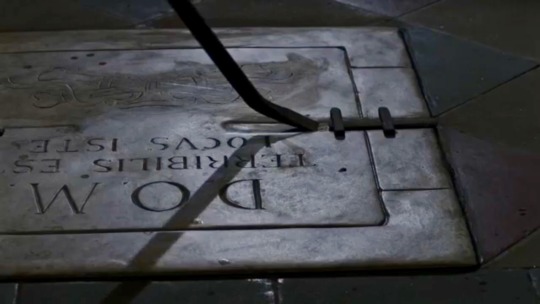
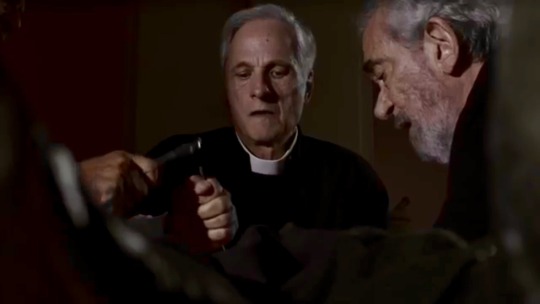






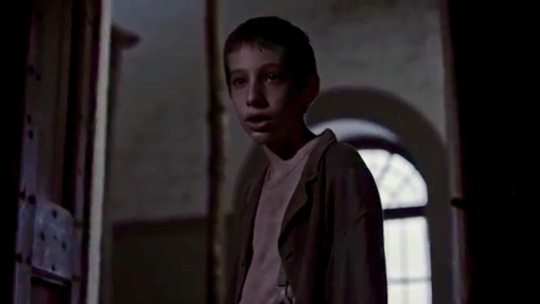

2019
🇬🇧 the New Movie of the MAESTRO PUPI AVATI
Il Signor Diavolo
IN ITALIAN 🇮🇹 CINEMA 08/22/2019
🇮🇹 Dopo Attese e Incertezze sulla Data..., ARRIVERÀ nei cinema 🇮🇹 il 22 agosto 2019
distribuito da 01Distribution
.... Il signor Diavolo
Il NUOVO film del Maestro PUPI AVATI
Nel Cast GRANDI NOMI ...
Gabriele Lo Giudice Filippo Franchini e CESARE CREMONINI vede anche le partecipazioni speciali di Gianni Cavina e Lino Capolicchio (entrambi nel cast del Capolavoro del 1976 del Maestro La Casa Dalle Finestre Che Ridono) , Chiara caselli Alessandro Haber Andrea Roncato e Massimo Bonetti
• Dopo il CAPOLAVORO “LA CASA DALLE FINESTRE CHE RIDONO e Zeder il Maestro lascerà di nuovo il Segno ? ...•
A poco più di un anno dalla sua pubblicazione, il romanzo "Il Signor Diavolo" di Pupi Avati si appresta ad arrivare sul grande schermo.
Il film del grande regista bolognese, un giallo, o forse sarebbe meglio dire un noir dalle tinte horror, ambientato nel nord est dell'Italia agli inizi degli anni 50 del secolo scorso.
La storia piena di mistero, dove religione e superstizione si confondono, è quella di un giovane funzionario del Ministero della Giustizia inviato a Venezia da Roma per seguire il processo a carico di un adolescente, accusato di un feroce omicidio, quello di un altro giovane considerato dalla fantasia popolare indemoniato...
In attesa di vedere il film al cinema, vi mostriamo il trailer ufficiale de Il Signore Diavolo:
La trama ufficiale del film:
Autunno 1952. Nel nord est è in corso l'istruttoria di un processo sull'omicidio di un adolescente, considerato dalla fantasia popolare indemoniato.
Furio Momentè, ispettore del Ministero, parte per Venezia leggendo i verbali degli interrogatori.
Carlo, l’omicida, è un quattordicenne che ha per amico Paolino. La loro vita è serena fino all'arrivo di Emilio, un essere deforme figlio unico di una possidente terriera che avrebbe sbranato a morsi la sorellina.
Paolino, per farsi bello, lo umilia pubblicamente suscitando la sua ira: Emilio, furioso, mette in mostra una dentatura da fiera.
Durante la cerimonia delle Prime Comunioni, Paolino nel momento di ricevere l'ostia, viene spintonato da Emilio. La particola cade al suolo costringendo Paolino a pestarla.
Di qui l'inizio di una serie di eventi sconvolgenti.
#IlSignorDiavolo #PupiAvati #LinoCapolicchio #GianniGavina #AlessandroHaber #ChiaraCaselli #AndreaRoncato #CesareCremonini #GabrieleLoGiudice #FilippoFranchini #MassimoBonetti #ItalianHorror #HorrorItaliano #FilmHorror #FilmOrrore #GialloFever #GialloItaliano #GialloAllitaliana #ItalianGiallo #SpaghettiGiallo #SpaghettiHorror #01Distribution 01 Distribution 01 Distribution
#il signor diavolo#pupi avati#lino capolicchio#andrea roncato#gianni gavina#massimo bonetti#chiara caselli#cesare cremonini#horror movies#film horror#horrormovies#gothic horror#italian horror#horrormovie#horror film#italian giallo#giallo fever#italian cult#cult#gialli#cinema cult#italian sexy comedy#giallo#international cult#giallofever
2 notes
·
View notes
Text
Città di Castello: il tifernate Giordano Petri protagonista di un nuovo film
Città di Castello: il tifernate Giordano Petri protagonista di un nuovo film
Giordano Petri, il brillante attore tifernate già interprete di numerose serie TV, è il protagonista dell’opera prima di Luca Guardabascio “Credo in un solo Padre”, un film contro la violenza sulle donne, basato su fatti realmente accaduti e che sarà visibile in streaming su Chili proprio a partire dall’8 marzo prossimo. Insieme a Giordano anche Massimo Bonetti,Anna Marcello,Claudio Madia,…

View On WordPress
0 notes
Text
The Darts Cup is an international football competition hosted every year in the Netherlands
The Darts Cup is an international football competition hosted every year in the Netherlands. It is the fourth-most watched international cup, after the European Super Cup and the UEFA Cup. It has featured some of the biggest names in European football, including AC Milan, Manchester United, Barcelona, PSV Eindhoven, Portsmouth, Rangers, Celtic and Fiorentina.
Italian football is part of the World Cup qualification process. Three nations are involved in the qualification process - italy, polonia & supersona. Two of these nations qualify from their respective leagues; the Italian league champions go into the Play-offs while the Play-offs consist of the two runners up from the leagues above. The third qualifying tournament consists of lower league teams only, which do not go onto the Play-offs. Italian football enjoys a proud tradition of producing some of Europe's best players such as Pierazzi, Bonetti, Alessandra De Laurentiis, Marco Vanborghini, Massimo Angelidis, Guido and coach Fabio Capello. ราคา-บอล วัน-นี้ ทุก-ลีก ทีเด็ด
Currently, there are twenty-four teams in the league, which are split into four groups of six. Each group plays three matches each against teams from the other groups, to see who qualifies for the finals. The play-offs also take place at the end of each season, with the winner being the team finishing top in the la liga. It should be noted that unlike football in Spain or Italy, which uses a single format for all competitions, the play-offs take place within a number of weeks. This means that the qualification process can become very complicated in a short period of time.
The last stage consists of four matches, consisting of playoffs and a Super Conference. In the playoffs, the four semi-finalists are decided by a vote, with the finalist from the " Champions League " receiving a one-point bonus. Naturally, this would mean that the Italian champions Fiorentina would win the first seed and move straight to the quarter finals, while AC Milan would lose their second seed and move on to the third. This is how the formality works, meaning that there is a great deal of controversy behind the scenes.
The most interesting aspect of the football first team standings is the manner in which the season is concluded. Every season has its own traditions and these include the playoffs in which the champions are decided. These playoffs occur between the teams finishing in the highest ranked positions, meaning that a team that finishes above third place has a distinct advantage over other teams that finish lower down the ladder. The playoffs are much tougher than the other competitions, which makes for a thrilling finish.
One common tradition that is followed in Italy is that the champions earn a statue outside the training ground as a commemoration to their victory. Another Italian footballing tradition is that, following the conclusion of a season, players wear the number of their season finishers on their chest. It is a well-known fact that many of today's top football players started out playing football as apprentices to seasoned veterans. Many of them are now regarded as superstars, having retired with big paychecks and with their own families at home. Due to the amount of pressure and the sheer length of the season, many young players find themselves unable to fulfil their football ambitions due to various reasons. For those who are able to stay fit and play football season after season, the opportunity to become a part of an Italian club's first team roster may be too difficult to refuse.
0 notes
Text
Ιταλία: Ορκίστηκε o Mario Draghi - ΔΥΣΤΥΧΩΣ ΞΕΠΟΥΛΗΘΗΚΕ και ο Ματτέο Σαλβίνι (αν δεν ήταν ήδη "€ντέχνως) ΠΛΗΡΗΣ ΥΠΟΤΑΓΗ & ΣΤΟ ΙΔΙΩΤΙΚΟ ΥΠΕΡΕΘΝΙΚΟ ΕΥΡΩ (€), και στην Ε.Κ.Τ, και στις Τοκογλυφικές Σαράφηκες Τράπεζες, και στην ΑΤΖΕΝΤΑ ΚΑΛΛΕΡΓΗ
13022021
Μάριο Ντράγκι : ΑΝΤΙΠΡΟΕΔΡΟΣ της Goldman Sachs Europe μεταξύ 2002 - 2007, και πρόεδρος της Ε.Κ.Τ. μεταξύ 2014 - 2020....
Σήμερα στις 12 το μεσημέρι ο Mario Draghi επισκέφθηκε το Κυρηνάλιο Μέγαρο όπου ορκίστηκε ως νέος πρωθυπουργός, ενώ λίγο αργότερα έλαβε χώρα η καθιερωμένη ‘τελετή του κουδουνιού’ που σηματοδοτεί την μετάβαση των καθηκόντων από τον απερχόμενο πρωθυπουργό Conte στο νέο Κυβερνητικό σχήμα.
Ύστερα από περίπου 5 εβδομάδες κυβερνητικής κρίσης, η Ιταλία φαίνεται να οδεύει προς μια νέα πολιτική περίοδο.
Χθες το βράδυ στις 8:00 μμ και κατόπιν συνάντησης με τον ΠτΔ κ. Sergio Mattarella, ο Mario Draghi ανακοίνωσε την λίστα των υπουργών που απαρτίζει το νέο κυβερνητικό σχήμα.
Η λίστα, η οποία μέχρι την ανακοίνωσή της είχε κυριολεκτικά θωρακιστεί από τον Draghi και ήταν βυθισμένη στο απόλυτο μυστήριο, αποτελείται από 23 υπουργούς, 15 εκ των οποίων πολιτικοί και 8 τεχνοκράτες.
8 οι γυναίκες που συμμετέχουν στο σχήμα, ενώ να σημειώσουμε ότι οι περισσότεροι υπουργοί κατάγονται από τον Ιταλικό Βορρά.
Τα τεχνοκρατικά πρόσωπα είναι αυτά που αναλαμβάνουν και τις κύριες υπουργικές θέσεις.
Η ‘λίστα Draghi’ έχει ως εξής:
Υπουργός Οικονομικών: Daniele Franco (τεχν/της, ο νούμερο δύο της Τράπεζας της Ιταλίας)
Υπουργός Εσωτερικών: παραμένει η Luciana Lamorgese (τεχν/της)
Υπουργός Εξωτερικών: παραμένει ο Luigi Di Maio (Κίνημα 5 Αστέρων)
Υπουργός Υγείας: παραμένει ο Roberto Speranza (Leu)
Υπουργός Πολιτισμού: παραμένει ο Dario Franceschini (Δημοκρατικό Κόμμα)
Υπουργός Δικαιοσύνης: Marta Cartabia (τεχν/της, η πρώτη γυναίκα Πρόεδρος του Συνταγματικού Δικαστηρίου)
Υπουργός Άμυνας: Lorenzo Guerini (Δημοκρατικό Κόμμα, πρώην επικεφαλής των Μυστικών Υπηρεσιών)
Υπουργός Τεχνολογικής Καινοτομίας: Vittorio Colao (τεχν/της, πρώην επικεφαλής της ομάδας ειδικών του πρώτου κύματος της πανδημίας)
Υπουργός Ανάπτυξης: Giancarlo Giorgetti (το νούμερο 2 του κόμματος της Lega)
Υπουργός Αγροτικής Ανάπτυξης: Stefano Patuanelli (Κίνημα 5 Αστέρων, πρώην Υπουργός Ανάπτυξης της Κυβέρνησης Conte II)
Υπουργός Οικολογικής Μετάβασης: Roberto Cingolani (τεχν/της, γνωστός επιστήμονας στον τομέα της Φυσικής και Νανοτεχνολογίας) – ένα υπουργείο που ήταν προϋπόθεση του Κινήματος 5 Αστέρων για να συμμετάσχουν στην Κυβέρνηση
Υπουργός Εργασίας: Andrea Orlando (Δημοκρατικό Κόμμα, αυτή θα είναι η τέταρτη θητεία του σαν υπουργός)
Υπουργός Δημόσια Διοίκησης: Renato Brunetta (Forza Italia, πρώην υπουργός της κυβέρνησης Berlusconi)
Υπουργός Περιφερειακών Υποθέσεων και Αυτονομιών: Mariastella Gelmini (Forza Italia, πρώην υπουργός της κυβέρνησης Berlusconi)
Υπουργός Νότου και Επικρατειακής Συνοχής: Mara Carfagna (Forza Italia, πρώην υπουργός της κυβέρνησης Berlusconi)
Υπουργός Μεταφορών και Υποδομών: Enrico Giovannini (τεχν/της, πρώην Υπουργός Εργασίας επί κυβέρνησης Letta)
Υπουργός Νεολαίας: Fabiana Dadone (Κίνημα 5 Αστέρων, υπεύθυνη για την μετάβαση του δημοσίου τομέα στην τηλεργασία κατά την διάρκεια της πανδημίας)
Υπουργός Τουρισμού: Massimo Garavaglia (Lega, Υφυπουργός Οικονομικών με την Κυβέρνηση Conte I)
Υπουργός Παιδείας: Patrizio Bianchi (τεχν/της, επικεφαλής του σχεδίου για το άνοιγμα των σχολείων τον περασμένο Σεπτέμβριο)
Υπουργός Πανεπιστημίου: Cristina Messa (τεχν/της, γνωστός επιστήμονας στον τομέα της ιατρικής και πρώην Πρύτανης του Πανεπιστημίου Bicocca του Milano)
Υπουργός Ίσων Ευκαιριών: παραμένει η Elena Bonetti (Ζωντανή Ιταλία)
Υπουργός Α.Μ.Ε.Α.: Erika Stefani (Lega, πρώην Υπουργός Περιφερειακών Υποθέσεων και Αυτονομιών ύπο την Κυβέρνηση Conte I)
Υπουργός για τις Σχέσεις με το Κοινοβούλιο: παραμένει ο Federico D’Incà (Κίνημα 5 Αστέρων)
Υφυπουργός παρά τον Πρωθυπουργό: Roberto Garofoli (τεχν/της, επικεφαλής του Υπουργείου Οικονομικών και με πλούσια εμπειρία σε επιτροπές διαφάνειας)
Το επόμενο βήμα την επόμενη Τετάρτη λοιπόν, για την ψήφο εμπιστοσύνης σε Κοινοβούλιο και Γερουσία
0 notes